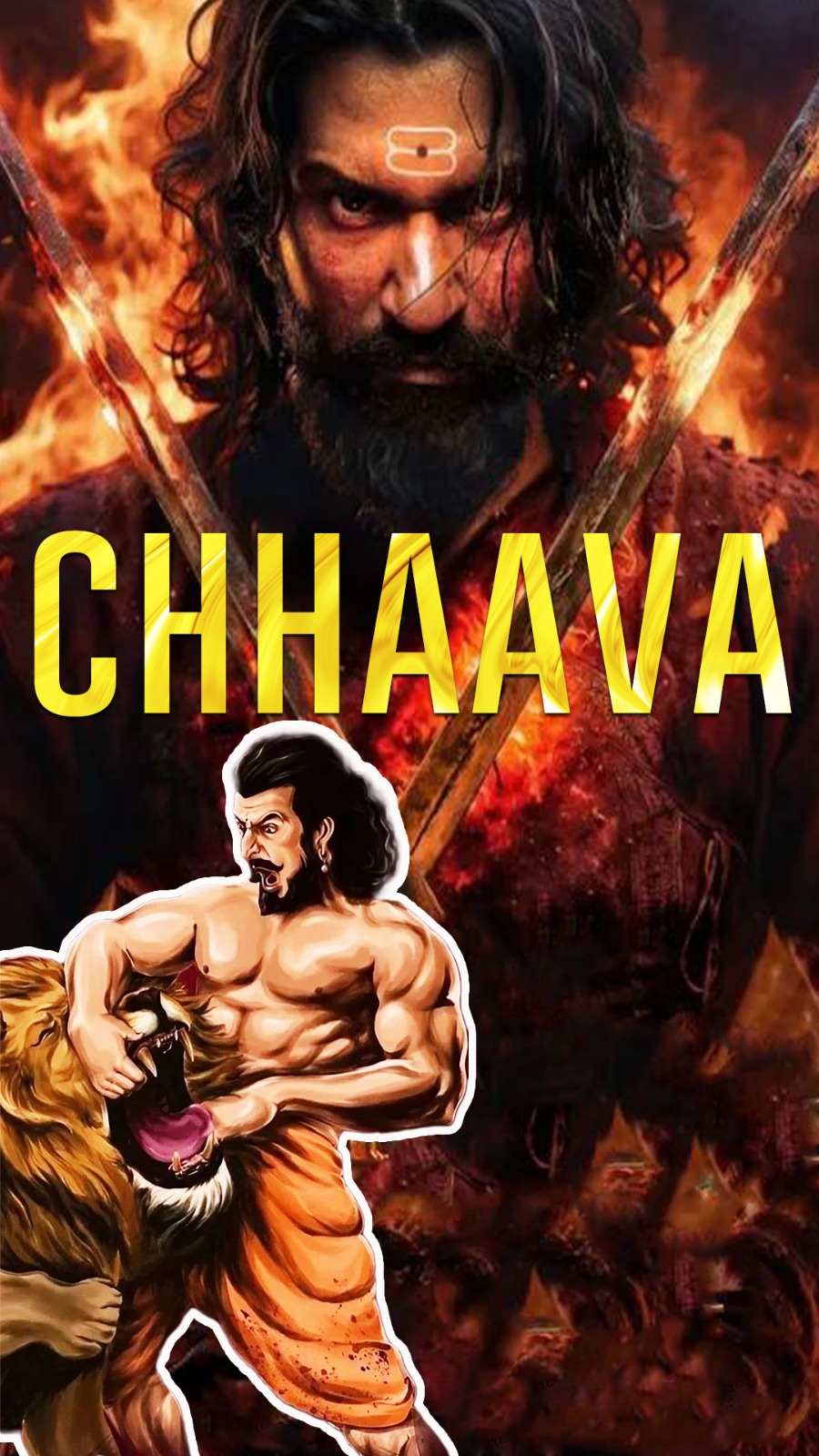‘Chhava’ Explores the Political and Administrative Brilliance of the Maratha Peshwas
Sambhaji: A Brief Overview for Competitive Exams
The Bollywood movie “Chhava,” currently a hit, is based on the life of Sambhaji Bhosale (1657–1689), the eldest son of Chhatrapati Shivaji Maharaj and the second Maratha ruler from 1680. Known for his bravery, Sambhaji led successful military campaigns against the Portuguese in Goa and resisted the Mughal invasion by Aurangzeb. Despite limited resources, he showcased exceptional guerrilla warfare tactics. A scholar, Sambhaji authored “Budhbhushanam”, focusing on political ethics and statecraft. Interestingly, the popular dish ‘Sambhar’ is said to have originated from his dietary practices.
Maratha Administration under Peshwas from 1714 to 1818 was marked by a complex system of governance across various domains. From the rise of the Peshwa office to the intricacies of revenue collection, village administration, and military organization, this era saw significant developments in Maratha rule. With a focus on both rural and urban administration, the Peshwas established a framework that governed the lives of millions across the Maratha Empire.
An Overview of Maratha Administration under Peshwas (1714-1818)
- Peshwa’s Rise to Prominence: Peshwa was one of Shivaji’s Ashta Pradhan (council of ministers). The office was initially not hereditary but gained prominence as the king’s power declined.
- Balaji Vishwanath (1713-1720) established the Peshwa’s office as supreme and hereditary. He took control of the administration and streamlined it after Shambhaji.
- The Central Secretariat: The centre of the Maratha administration was the Peshwa Secretariat at Poona, which involved:
- Managing revenues, expenditures, and the accounts submitted by the village and district officials.
- Daily record of all revenues, grants, and payments received from foreign territories.
- Handling the salaries of all the public servants and the budgets under civil, military, and religious heads.
- Provinces
- Sar Subhadar: Large provinces had Sar-Subahdars as provincial governors. Divisions in the provinces were called Subahs and Pranths.
- Mamlatdar and Kamavistar: were Peshwa’s representatives in the districts and were responsible for every branch of district administration.
- Deshmukh and Deshpandes: who were district officers in charge of accounts, observed the activities of Mamlatdars and Kamavistars. It was a system of checks and balances.
- At the Pargana level, Deshpande used to keep accounts and records, whereas Deshmukh had legal and policing authority.
- Preventing Financial Misappropriation: In order to prevent the misappropriation of public money, the Maratha government collected a heavy sum (Rasad) from the Mamlatdars and other officials.
- It was collected on their first appointment to a district.
- Revenue Sources
- Land Revenue: was the primary income which transitioned from sharing of agricultural produce (Shivaji’s time) to tax farming.
- Assessment: of land revenue was based on the kinds of crops, facilities for irrigation, and productivity of the land.
- Village Administration
- Village: was the basic unit of administration headed by Patel and was self-supportive.
- Patel: not paid by the government and hereditary chief officer, he was responsible for remitting revenue to the centre, assisted by the accountant and record-keeper, Kulkarni.
- Hereditary Servants: performed communal functions.
- Village Artisans: provided compulsory labour, or begar.
- Urban Administration
- Kotwal: was the chief officer in towns and cities.
- He also functioned as the magistrate.
- Functions of Kotwal: His functions included the maintenance of peace and order, regulation of prices, settling civil disputes and sending monthly accounts to the government.
- Kotwal: was the chief officer in towns and cities.
- Military Structure
- Army: Closely resembled the system of the Mughals. They recruited soldiers from across India, contrasting with Shivaji’s local Maratha enlistment.
- The army, a mix of various groups including Arabs and Sikhs, had mercenaries from rival chieftains, causing internal disputes and affecting Maratha unity.
- Cavalry: It was the main strength of the Maratha army.
- Each Jamindar was obligated to bring a stipulated number of horsemen every year.
- These horsemen were classified into three categories, based on the quality of their horses.
- Infantry and Artillery: Infantry were Arabs, Rohillas, Sikhs, and Sindhis and were paid higher salaries than the Maratha soldiers.
- Artillery was manned by Portuguese, Indian Christians, and later English.
- Navy: They guarded Maratha ports, combated piracy and collected customs duties. Balaji Vishwanath established naval bases at Konkan, Khanderi, and Vijayadurg .
- Army: Closely resembled the system of the Mughals. They recruited soldiers from across India, contrasting with Shivaji’s local Maratha enlistment.
- Judicial System
- Arbitration and Legal System: Rudimentary, lacking codified laws and procedures, and arbitration was prioritised.
- Panchayat Justice and Appeals: Unresolved cases were transferred for decision to a panchayat appointed by the Patel in the village and by the leading merchants in towns. Appeals were made to the Mamlatdar.
- Hierarchy in Criminal Cases: A hierarchy existed in criminal cases, with Raja Chhatrapati at the apex level, followed by Peshwa, Sar-Subahdar, Mamlatdar and Patel, with the common use of flogging and torture for confessions.
- Police System
- Watchmen: were employed in every village. They were usually from the Mahar caste.
- Taxation in Troubled Regions: The residents of the disturbed area had to pay an additional house tax as the government had to send forces from the irregular infantry to control crimes.
Maratha Administration under the Peshwas (1714–1818)
Maratha governance during this period was characterized by a sophisticated and multifaceted system that managed various aspects of statecraft. Beyond establishing a centralized power base, the Peshwas developed innovative mechanisms in revenue collection, local governance, and military organization that influenced not only the Maratha Empire but also later administrative practices in India.
An Enhanced Overview of Maratha Administration under the Peshwas (1714–1818)
- Peshwa’s Rise to Prominence:
- Initially one of Shivaji’s eight ministers (Ashta Pradhan), the Peshwa position was not originally hereditary. However, as royal power waned, the role expanded in importance.
- Balaji Vishwanath (1713–1720) redefined the office by transforming it into a hereditary and supreme authority, streamlining the administrative processes after the reign of Shambhaji. Scholars note that this transformation laid the foundation for a more centralized yet flexible governance model that could quickly adapt to changing political dynamics.
- The Central Secretariat:
- The hub of administration was the Peshwa Secretariat at Poona, responsible for:
- Managing revenues, expenditures, and processing accounts submitted by village and district officials.
- Maintaining detailed daily records of all incomes, grants, and payments from both domestic and foreign sources.
- Overseeing the salaries of public servants and managing budgets for civil, military, and religious functions.
- Historians highlight that the Secretariat’s rigorous record-keeping was an early form of modern bureaucratic management, emphasizing accountability and financial discipline.
- The hub of administration was the Peshwa Secretariat at Poona, responsible for:
- Provincial and District Structure:
- Sar-Subhadar:
- Large provinces were overseen by Sar-Subahdars (provincial governors), with provinces further divided into Subahs and Pranths for more manageable administration.
- Mamlatdar and Kamavistar:
- Acting as the Peshwa’s emissaries in the districts, these officials were entrusted with all facets of district-level governance.
- Deshmukh and Deshpande:
- Deshmukhs handled legal and policing functions, while Deshpandes maintained accounts and records. This dual system served as an effective check and balance on local administrators.
- Preventing Financial Misappropriation:
- To curb the misuse of funds, a substantial fee (Rasad) was levied on Mamlatdars and similar officials upon their first appointment—a practice that underscores the emphasis on fiscal responsibility.
- Additional studies suggest that this layered administrative structure helped foster local accountability while ensuring central oversight, a balance that is still admired in contemporary governance studies.
- Sar-Subhadar:
- Revenue Sources:
- Land Revenue:
- The primary income source evolved from the earlier practice of sharing agricultural produce (as seen during Shivaji’s era) to a more systematic approach based on tax farming.
- Assessment Methodology:
- Land revenue assessments took into account the type of crops grown, irrigation facilities, and the overall productivity of the land. This pragmatic approach to revenue collection allowed the Marathas to optimize resource mobilization.
- Comparative analyses with other contemporary empires reveal that the Maratha revenue system was notably flexible, enabling rapid adjustments in times of crisis.
- Land Revenue:
- Village Administration:
- Village as a Basic Unit:
- Each village functioned as a self-sustaining unit, headed by a Patel who played a central role in local governance.
- Role of the Patel:
- The Patel, a hereditary chief not on a government salary, was responsible for collecting and forwarding revenues to the central authority. He was supported by the Kulkarni, the village accountant and record-keeper.
- Hereditary Servants and Artisans:
- Communal tasks were carried out by hereditary servants, while local artisans contributed compulsory labor (begar) as part of their civic duties.
- Research into decentralized governance often cites the Maratha village system as a successful model of grassroots administration, where local autonomy was balanced with central control.
- Village as a Basic Unit:
- Urban Administration:
- Role of the Kotwal:
- In urban centers, the Kotwal served as the chief officer and de facto magistrate.
- Functions of the Kotwal:
- Responsibilities included maintaining law and order, regulating market prices, resolving civil disputes, and submitting monthly administrative reports to the central government.
- Modern studies in urban governance draw parallels between the Kotwal’s functions and those of contemporary municipal officers, underscoring the lasting influence of the Maratha urban administrative model.
- Role of the Kotwal:
- Military Structure:
- Army Composition:
- The Maratha military system, inspired in part by the Mughal model, recruited soldiers from diverse regions of India rather than relying solely on local enlistment. This resulted in a mixed force that included Arabs, Sikhs, and mercenaries from rival chieftains.
- Cavalry as the Core Strength:
- The cavalry was the backbone of the Maratha military. Each Jamindar was obligated to provide a fixed number of horsemen annually, and these forces were categorized based on the quality of their horses.
- Infantry and Artillery:
- The infantry, consisting of Arabs, Rohillas, Sikhs, and Sindhis, received higher salaries compared to native Maratha troops, while artillery units were initially manned by Portuguese, later by Indian Christians, and eventually by the English.
- Naval Capabilities:
- The naval arm was tasked with safeguarding ports, combating piracy, and collecting customs duties. Balaji Vishwanath’s establishment of naval bases at strategic locations like Konkan, Khanderi, and Vijayadurg underscored the maritime strength of the empire.
- Military historians often credit the Maratha military system with its adaptability and innovative tactics—elements that were crucial in countering both internal dissensions and external threats.
- Army Composition:
- Judicial System:
- Legal Framework and Arbitration:
- The legal system was rudimentary, lacking codified laws, and relied heavily on arbitration to resolve disputes.
- Panchayat Justice and Appeals:
- Local panchayats, constituted by the Patel in villages or leading merchants in towns, handled unresolved cases, with appeals progressing to the Mamlatdar.
- Hierarchy in Criminal Cases:
- A defined hierarchy in criminal adjudication was observed, starting from the apex authority of the Raja Chhatrapati, followed by the Peshwa, Sar-Subahdar, Mamlatdar, and Patel. Punishments such as flogging and torture were common methods for eliciting confessions.
- Comparative legal studies suggest that while the system might appear rudimentary by modern standards, it provided a functional framework for maintaining order in a vast and diverse empire.
- Legal Framework and Arbitration:
- Police System:
- Village Watchmen:
- Every village maintained a watchman system, typically composed of individuals from the Mahar caste, to ensure local security.
- Taxation in Disturbed Regions:
- In regions afflicted by unrest, an additional house tax was imposed to finance the deployment of irregular infantry tasked with maintaining order.
- Scholars emphasize that the integration of local policing mechanisms with centralized oversight was a key factor in the overall stability of the Maratha state.
- Village Watchmen:
Additional Insights and Legacy:
Beyond the detailed administrative framework, modern research highlights several enduring features of Maratha governance:
- Decentralized Governance with Central Oversight:
The Maratha model was one of the earliest examples of decentralized administration, which allowed local leaders to exercise autonomy while remaining accountable to a central authority. This duality enhanced efficiency and responsiveness—a model that continues to influence administrative reforms in India. - Flexibility and Adaptability:
Faced with internal and external challenges, the Marathas demonstrated remarkable flexibility by adapting their revenue, military, and judicial systems. This adaptability is often cited as a major reason for their resilience against larger, more centralized empires. - Influence on Modern Administration:
Many scholars argue that the Maratha administrative practices, particularly the emphasis on local governance and accountability, laid the groundwork for modern democratic and bureaucratic systems in India.
By integrating these additional perspectives, we gain a richer understanding of how the Maratha administration under the Peshwas not only managed a vast and diverse empire but also contributed lasting principles to the evolution of governance in India.






